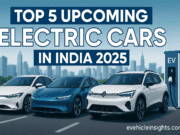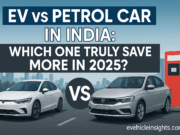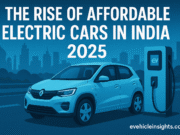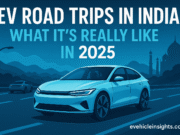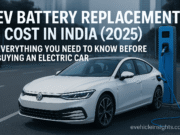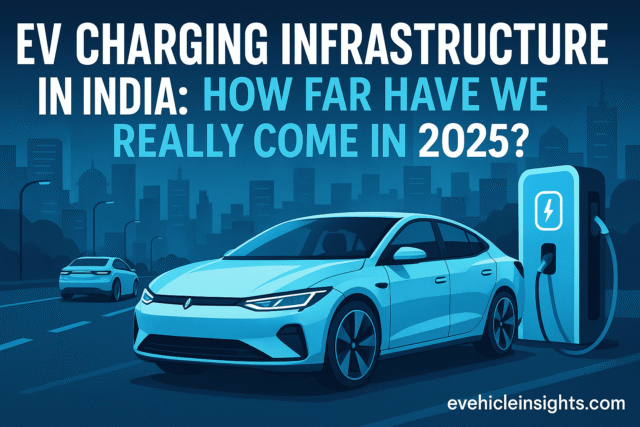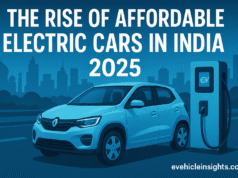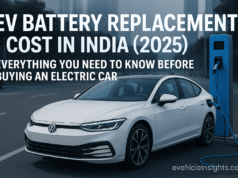There was a time, not that long ago, when owning an electric vehicle in India felt a bit like being the only vegetarian at a barbecue — curious stares, limited options, and a lot of awkward questions. “Where will you charge it?” was usually the first. And to be fair, it wasn’t an unreasonable concern.
Fast forward to 2025, and things look very different. The electric vehicle market is no longer just a niche for the eco-conscious or the tech-obsessed — it’s quietly, and in some cases loudly, becoming mainstream. You see Nexon EVs zipping down Delhi’s ring road, MG ZS EVs parked outside Bangalore offices, and Ola scooters crowding Mumbai streets. But the real question isn’t about how many EVs are on the road. It’s about something far more practical: can the country’s charging infrastructure actually support this electric revolution?
Let’s talk honestly about where we stand.
In cities like Delhi and Pune, the shift is undeniable. Walk into a mall parking lot or a metro station and you’re likely to spot a public charger — maybe even two. Some apartment complexes, especially the newer ones, now offer dedicated EV charging bays. You’ll even find sleek, futuristic-looking fast chargers at a few Indian Oil petrol stations, humming silently next to noisy diesel pumps.
But talk to actual EV owners — not just auto execs at expos — and a more complicated picture starts to emerge.
Take Ravi, for example, a tech manager in Bengaluru who bought a Tata Tiago EV last year. “Charging at home is fine,” he says, “but on longer trips, I still plan like I’m flying a plane. You check range, weather, incline, where you’ll stop. Sometimes I’ll find a charger online, but when I get there — it’s either broken, blocked, or under maintenance. No notice. No alternative.”
That sort of experience isn’t uncommon. And that’s the frustrating part: we’ve made progress, yes, but it’s uneven, unreliable, and at times—infuriatingly patchy.
As of mid-2025, India boasts over 15,000 public charging stations. That number sounds impressive on paper. But zoom in and you’ll realize most of them are clustered in major urban centers. Delhi NCR, Mumbai, Bengaluru, Hyderabad — these cities are leading the charge, quite literally. Step outside these EV hotbeds though, and the infrastructure thins out like a weak Wi-Fi signal in a concrete basement.
Highways are a mixed bag. There’s been genuine movement in this space — the Delhi-Chandigarh corridor now has fast-charging stops every 60–70 km. The Mumbai-Pune Expressway is lined with chargers that (usually) work. But even on popular routes, it’s still not as simple as pulling over and plugging in. Some chargers require three different apps, an OTP, and a bit of patience. Others are locked behind “registered user” paywalls. And heaven help you if you need to call support.
Now, let’s address the elephant in the room: rural India. Or even Tier-2 and Tier-3 towns. If you live in, say, Bareilly or Belgaum and want to switch to an EV, you’re mostly on your own. Public chargers? Rare. Service support? Sparse. Even electricians familiar with EV home installations are hard to come by. It’s not a lack of interest — it’s a lack of infrastructure. Plain and simple.
And then there’s the matter of cost. You’d think charging your EV would be cheap everywhere — it isn’t. Home charging is still affordable, sure. Most folks pay between ₹6–₹10 per kWh, which translates to about ₹150–₹200 for a full charge on something like a Tiago or a ZS EV. But public charging? That’s a whole different story. Prices vary wildly, from ₹12/kWh to as much as ₹25/kWh for fast charging. And there’s zero consistency between providers.
Speaking of providers, the EV charging ecosystem right now is a bit of a wild west. You’ve got Tata Power, Ather Grid, Statiq, ChargeZone, Jio-bp — all building out their own networks. Each has its own app, login, wallet, and quirks. It’s not unlike the early days of mobile wallets in India — convenient in theory, chaotic in execution.
Here’s something few people talk about: the actual experience of charging. Not just the location or availability — but the process. It should be as smooth as filling up your tank with petrol. But more often than not, it’s not. Chargers go offline without notice. Some don’t support UPI or have glitchy RFID systems. And sometimes, they’re blocked by ICE cars (internal combustion engine vehicles), with no enforcement mechanism in place.
Now to be fair, the government has been trying. The FAME II scheme has helped subsidize public chargers, especially in metros. The Ministry of Power issued new guidelines in 2024 mandating chargers in commercial buildings and large residential complexes. And there’s even talk of integrating solar panels and battery storage to power chargers in off-grid areas.
But policies are only as good as their execution. And unfortunately, state-level red tape and land acquisition issues still slow things down.
That said, we’re not pessimistic. Quite the opposite. At EVehicleInsights, we genuinely believe the tide is turning. We’re seeing private players step up in a big way — from Adani setting up urban EV hubs to startups deploying portable charging vans in cities like Ahmedabad. The momentum is there. The demand is real. Now we just need the systems to catch up.
What India needs isn’t just more chargers — it needs smarter, more reliable ones. We need a unified app or roaming network, better enforcement of EV-only parking, dynamic pricing that doesn’t punish fast charging, and real-time charger availability data. And most of all? We need trust. EV drivers should be able to rely on infrastructure the way they rely on ATMs or petrol stations.
Until then, the EV journey in India will remain a bit of a mixed bag. Some days it’s smooth and silent — others, it’s a frustrating game of charger hide-and-seek.
But if you ask us whether things have improved since 2020? Unequivocally, yes. And if we keep at it — with better design, policy, and tech — the next five years could make EV ownership feel less like a brave experiment… and more like the obvious choice.

